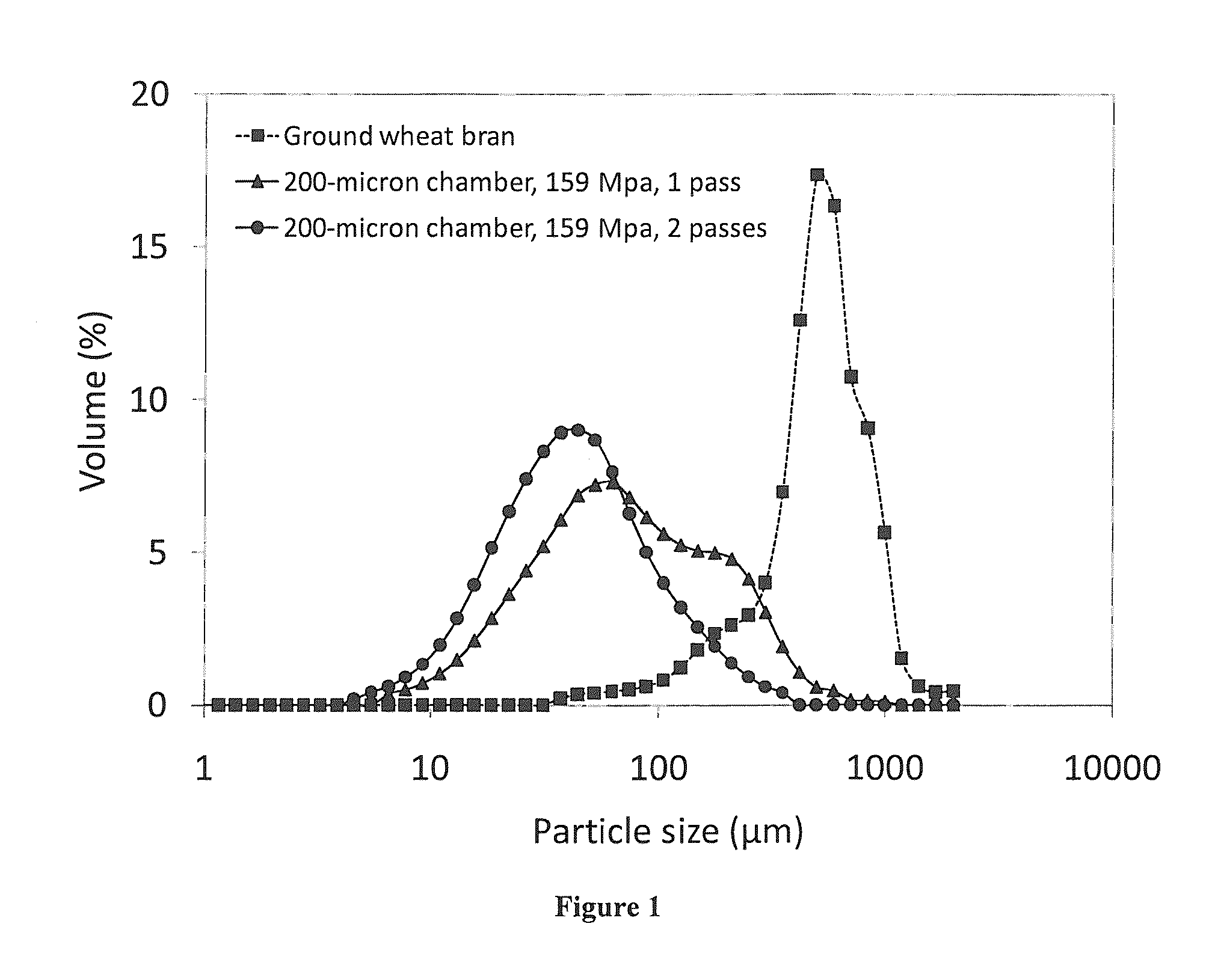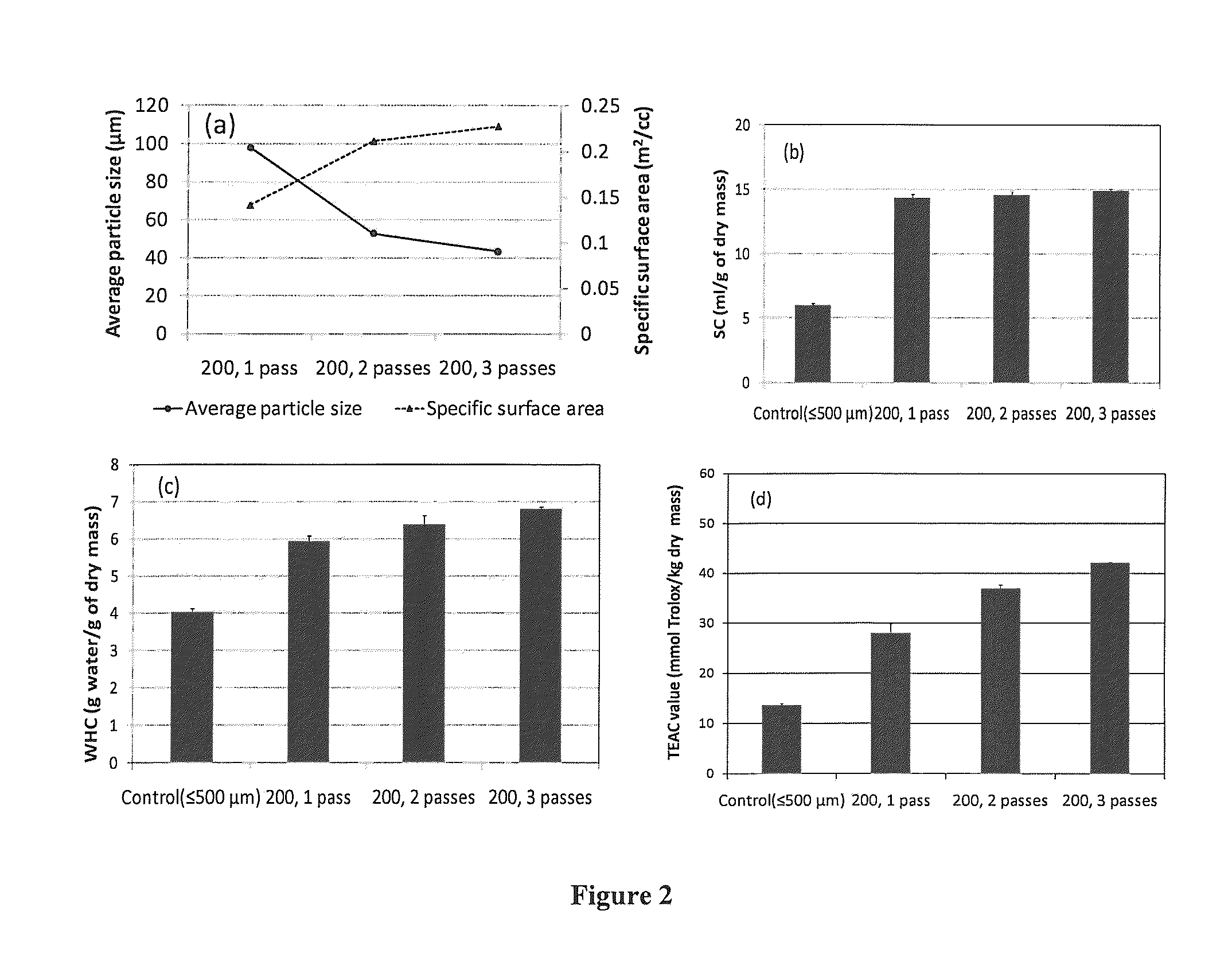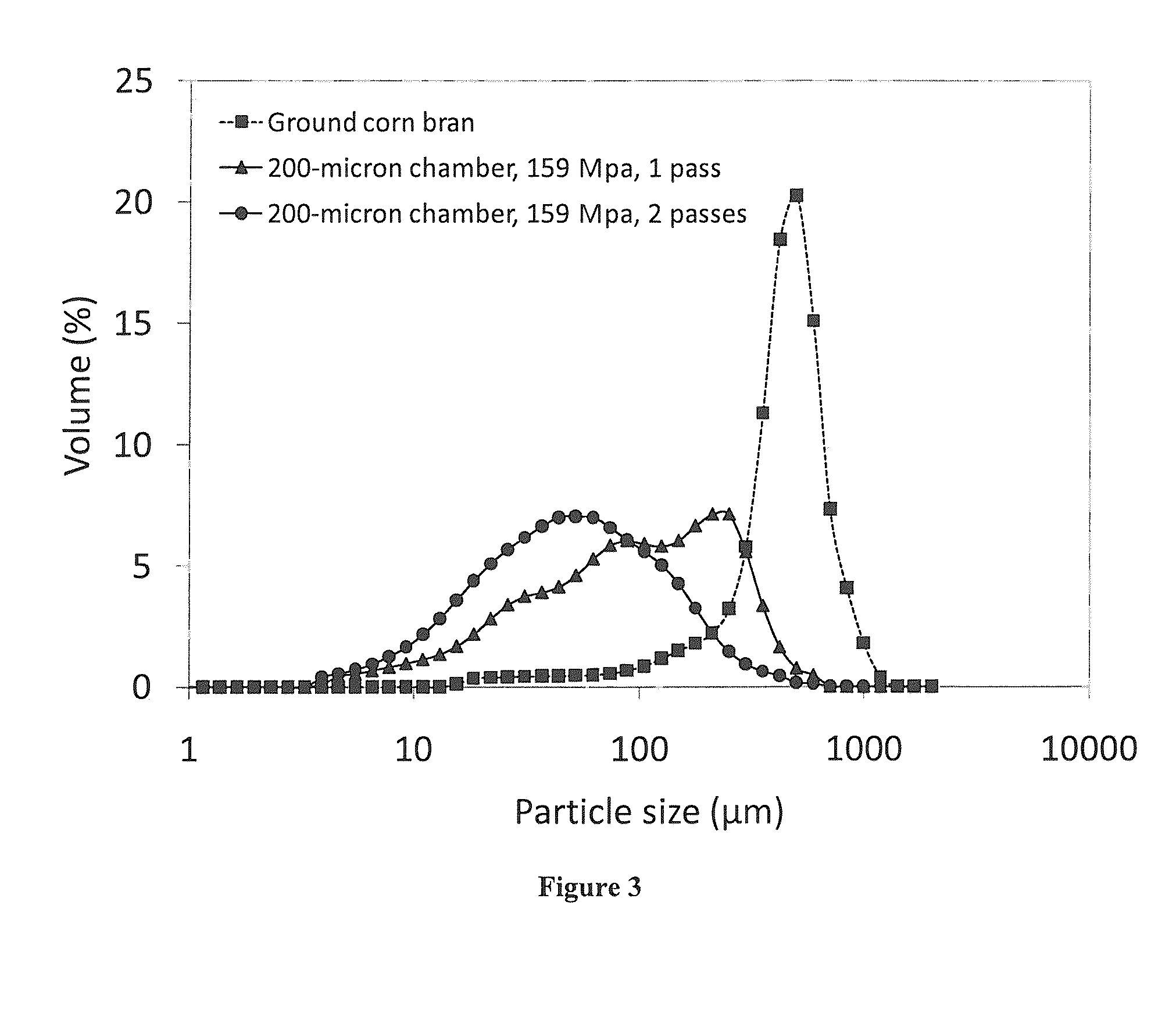Microfluidization of Brans and Uses Thereof
a technology of microfluidization and bran, which is applied in the field of microfluidization of bran, can solve the problems of adversely affecting the color, texture, flavor and/or taste of supplemented foods, and achieve the effects of reducing the amount of fatty acids
- Summary
- Abstract
- Description
- Claims
- Application Information
AI Technical Summary
Benefits of technology
Problems solved by technology
Method used
Image
Examples
example 1
Materials and Methods
[0075]An M-110P Microfluidizer® Processor (Microfluidics, Newton, Mass.) was used for processing. Raw wheat bran was purchased from ConAgra Foods (Omaha, Neb.); raw corn bran was purchased from Cargill (Paris, Ill.). Raw oat bran was purchased from Bob's Red Mill Natural Foods (Milwaukie, Oreg.).
[0076]The compounds 2,2′-azino-bis[3-ethylbenz-thiazoline-6-sulphonate (ABTS), 2,2-diphenyl-1-picrylhydrazyl (DPPH), 3-(2-pyridyl)-5,6-diphenyl-1,2,4-triazine-4′,4″-disulfonic acid monosodium salt (Ferrozine), Folin-Ciocalteu's phenol reagent, potassium ferricyanide (K3Fe(CN)6) 6-hydroxy-2,5,7,8-tetramethylchroman-2-carboxylic acid (Trolox), Ethylenediaminetetraacetic acid disodium salt dihydrate (EDTA-Na2.2 H2O), Iron (II) chloride, potassium persulfate, ferric chloride (FeCl3) and L-ascorbic acid were purchased from Sigma-Aldrich (St. Louis, Mo., USA). Gallic acid was obtained from Acros Organics (New Jersey, USA). All the solvents used were of HPLC grade, and other ch...
example 1-1
Preparation of Samples
[0096]Raw brans were intensively washed using deionized water, typically to remove flour residues and other floating impurities. The washed samples were then air dried at about 35° C. for about 48 hr. Each bran sample was ground (Waring variable speed laboratory blender (Model MX-LB10S)) and passed through a sieve with a known pore size, for example a U.S. Standard No. 35 with a nominal opening of 500 μm (Fisher Scientific Co., TX, USA)). In this way, samples of brans with a maximal particle size of 500 μm were prepared. Finally, each sample was dispersed in deionized water to prepare dispersions at a concentration up to 20% (wt / wt) for example, when an IC200 is used in the processing. Other solid concentration levels, such as 1%, 5%, 7.5%, 10%, or 15% (wt / wt) can be prepared in dispersion as appropriate.
[0097]Conditions for microfluidization processing, unless otherwise indicated, were generally 200 μm interaction chamber, room temperature (22-24° C.), 18000-2...
example 1-2
[0100]Studies on wheat bran demonstrated the effectiveness of microfluidization in modifying bran. Commercial raw wheat bran was ground using a Waring variable speed laboratory blender (Model MX-LB10S) and passed through a U.S. standard No. 35 sieve with a nominal opening of 500 μm (Fisher Scientific Co., TX, USA). Suspensions of the obtained bran (3% wt / wt) were then prepared in water and processed through a 200 μm interaction chamber at about 25,000 psi and room temperature for 1-3 passes.
[0101]A typical particle size distribution of wheat bran particles before and after microfluidization is shown in FIG. 1. For ground wheat bran, 50% of the particle volume was comprised of particles having a diameter between about 35 μm and about 460 μm, 10% of the total particle volume was comprised of particles having a diameter between about 35 μm and about 265 μm, and 10% of the total particle volume was comprised of particles having a diameter between about 660 μm—and about 2000 μm (maximum ...
PUM
 Login to View More
Login to View More Abstract
Description
Claims
Application Information
 Login to View More
Login to View More - R&D
- Intellectual Property
- Life Sciences
- Materials
- Tech Scout
- Unparalleled Data Quality
- Higher Quality Content
- 60% Fewer Hallucinations
Browse by: Latest US Patents, China's latest patents, Technical Efficacy Thesaurus, Application Domain, Technology Topic, Popular Technical Reports.
© 2025 PatSnap. All rights reserved.Legal|Privacy policy|Modern Slavery Act Transparency Statement|Sitemap|About US| Contact US: help@patsnap.com



